Genetics
C-locus
3. Chinchilla dilution, cch
3.2. Heterozygous Forms
3.2.1. cch/ce
3.2.1.1. cchce with Ay
As the chinchilla and the extreme dilution genes have a strong diluting effect on the yellow pigment, combined they reduce the colour of the animal to creamish, almost white, regardless of the other genes present. The final shade depends on the modifiers present, especially those of the rufus group or red pigment intensifiers. Adding umbrous-determinans (which make red and sable), you'll get a lighter form of Marten sable.
3.2.1.2. cchce with A
With A/* B/* cch/ce the black pigment is reduced to a brownish shade, while the yellow band is reduced to almost white. However, this wouldn't be the right way of producing chinchilla (added with the tan-gene or white-bellied agouti, of course), because the standard requires slate blue undercolour, which this one obviously does not have. With cinnamon, the result would be the same than with chinchillated cinnamon (the grey cinnamon), but with paler band where the golden brown colour is on the cinnamon.
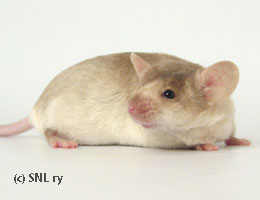
Ay/at B/* cch/ce U |
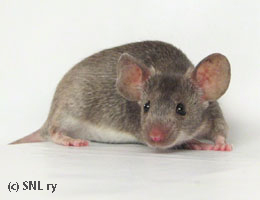
A/at cch/ce |
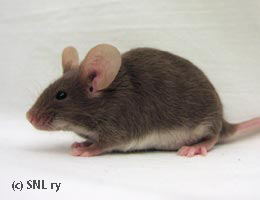
at/a B/* cch/ce |
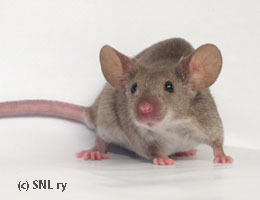
A/at B/* cch/ch |
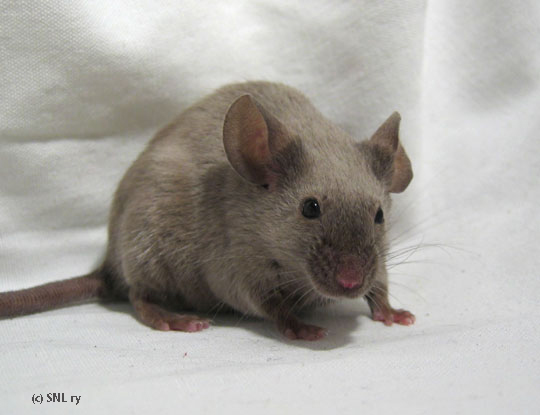
Blue burmese, a/a B/* cch/ch d/d |

Burmese, a/a B/* cch/ch |
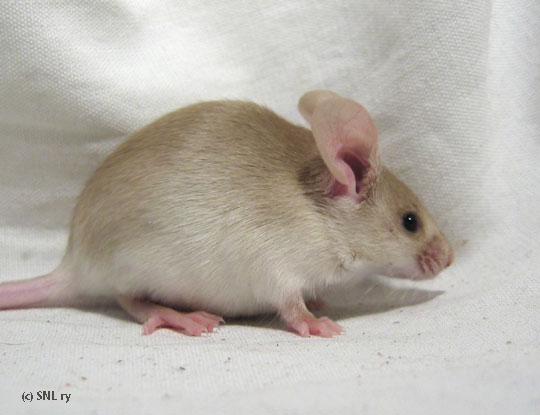
Ay/at B/* cch/c U+ |
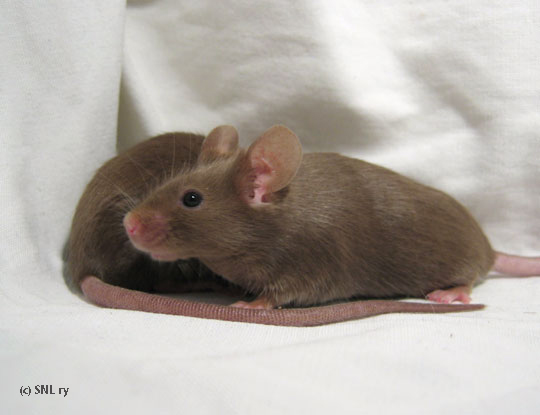
Stone, a/a B/* cch/c |
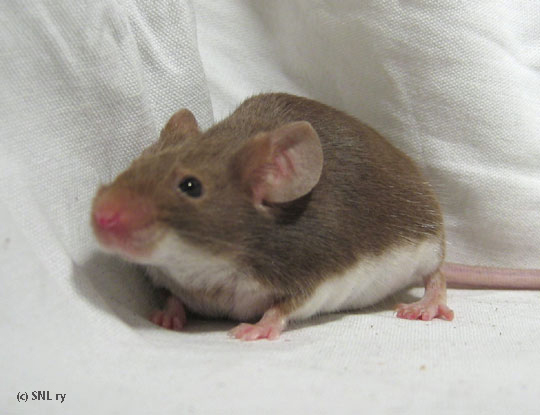
Stone fox, at/* B/* cch/c |
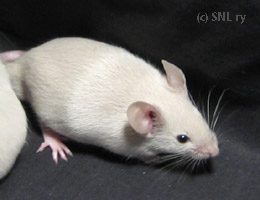
Silver, a/a B/* cch/c d/d |
3.2.1.3. cchce with at
These mice on a black background look like a regular chocolate fox, when in reality they are diluted black tans with at least one full colour B. With chocolate background these mice look like normal chocolate foxes. This "mock chocolate fox" effect can get the breeder scratching her head in disbelief, if she has mated a mock chocolate fox with a true one and thus gets seemingly impossible young: black foxes.
3.2.1.4. cchce with a
It is said that on a nonagouti black background the combination of chinchilla and extreme nonagouti gene the result is a mouse that looks like a normal chocolate, only being slightly greyer in colour. This is one of the possible "mock chocolates".
a/a bc/* cch/ce -mice aren't easily distinguished from the a/a bc/* C/C mice. This is because the effect of the c-locus recessives on the brown pigment starts only with the cchc.
3.2.2. Chinchilla dilution cch with himalayan ch
In order to avoid these pages expanding too much, I'll concentrate on just certain combinations. Any mouse carrying the himalayan gene ch has some tendency for getting colour points. This is also the case with cch/ch.
3.2.2.1. cch/ch and A
On a ticked background the points ch brings to this phenotype show quite weakly. A/* cch/ch looks very much like cch/ce, although it looks browner.
3.2.2.2. cch/ch and a
a/a B/* cch/ch mice are brown mice with dark brown to black points, with no shadings. In some standards this is called siamese sable, in Finnish standards this is called burmese (after the phenotypically but not genotypically similar gerbil variety). Adding the blue dilution d's you'll get the blue burmese, which has intermediate blue body colour and points as in the blue point siamese. There are no shadings present, as there are none with the c-locus heterozygotes involving one ch.
3.2.3. Chinchilla dilution cch with albino c
3.2.3.1.cch/c and Ay
Mice with Ay/* cch/c are lighter than Ay/* cch/ce, being off-white to white, depending on modifiers. With umbrous added, the result is a delicate light-shaded form of marten sable, lighter than with cch/ce.
3.2.3.2. cch/c and A
This is a shade lighter than A/* cch/ce. Black pigment of an agouti is diluted into muddy brown, yellow into off-white/white. With chocolate dilution added, the result is a rather nondescript light muddy ticked mouse.
3.2.3.3. cch/c and at
This combination brings (nonstandardized) foxes, although the darkest (modifier dependent) version of at/* B/* cch/c could pass for a chocolate fox, lighter one for coffee fox.
3.2.3.4. cch/c and a
a/a cch/c mice are light mock chocoletes of various shades in the dark end towards mice recembling dark beige. These are sometimes called stone (which should not be mistaken for British usage of the same term, where stone is genetically a/a ce/ce, beige or the chocolate dilution of the same theme, coffee).
With a/a B/* cch/c d/d, you'll get a black eyed silver. The variety has a tendency for uneven colouring and point-like darker extremities. These problems are shared with other cch/c genotypes.
Adding pink eyes to cch/c varieties gives pink eyed whites. Some may be off-white, but usually they can't be told apart from c/c mice, expect from odd young popping up when mated with a true albino.
